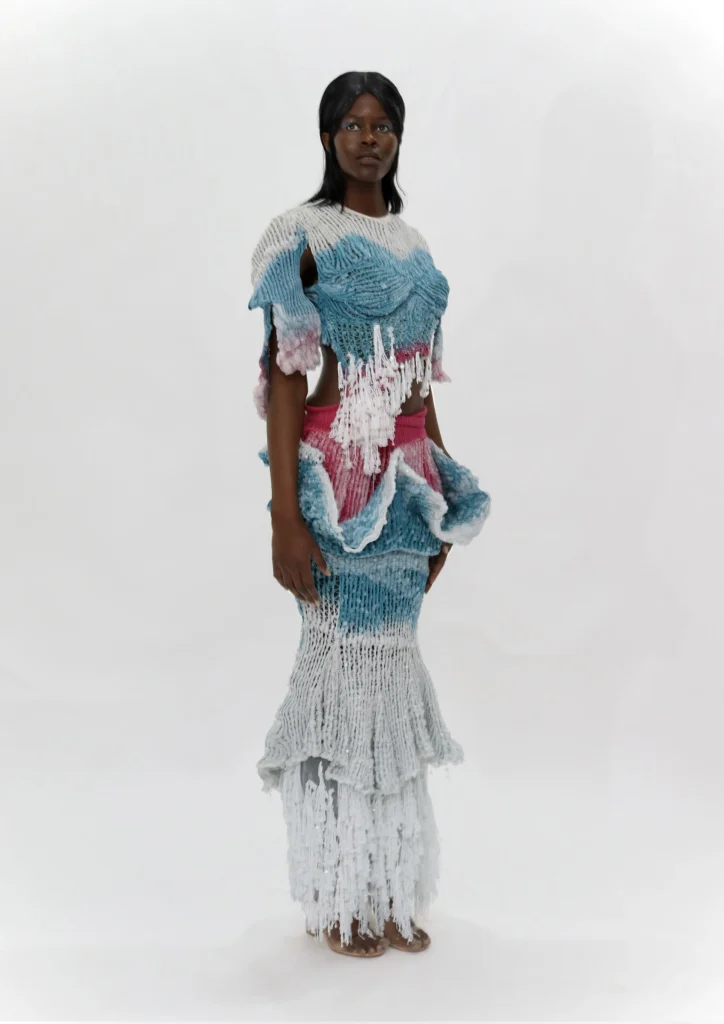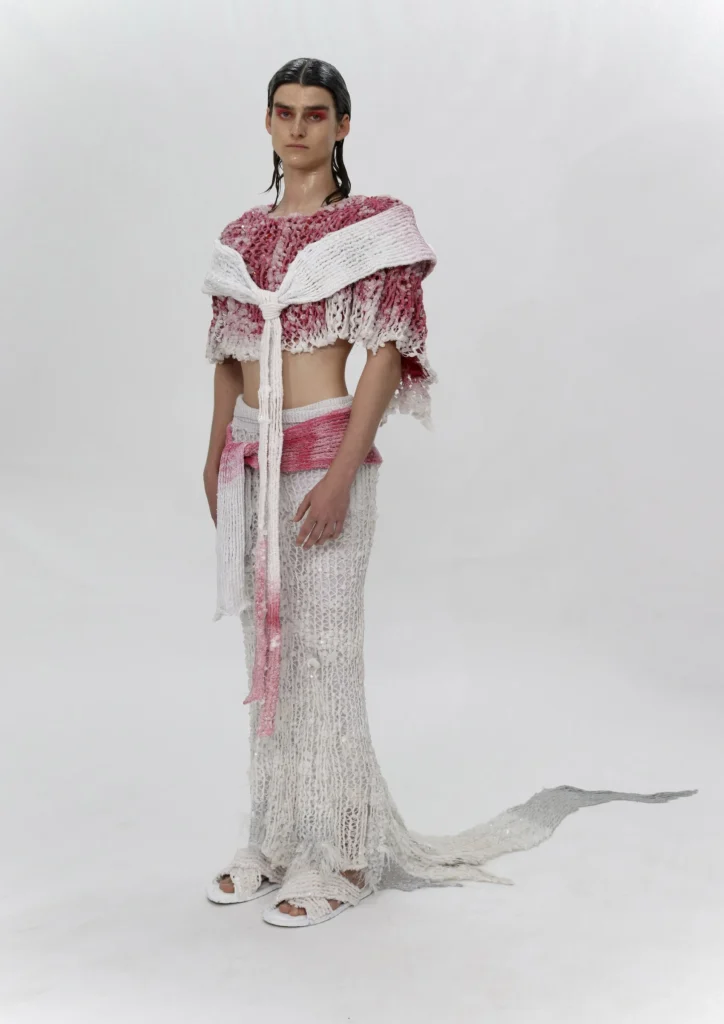Images: Henry Roberts
Sacred craftsmanship meets radical sustainability in Patrick Garvey’s Crystalline collection, where hand-crocheted lace, repurposed wool and recycled linens converge in a bold reinvention of religious iconography.
Garvey’s collection features intricate knitted garments adorned with unique crystal formations. He describes this process as “a new means of creating a divine identity”.
His technique, where a solution that makes crystals grow was used directly onto specific types of knitwear, earned him the L’Oréal Professionnel Young Talent Award. The composition of the yarn changes how the crystals form, resulting in pieces that are visually striking and remarkably heavy – some of them weigh 20 kg.
Drawing on Irish Catholic heritage and queer identity, Garvey blends natural fibres with layered symbolism to explore redemption, ritual and self-expression. A powerful example of how sustainable materials can carry deep cultural and emotional weight – and still make a statement. He explores diverse forms of spirituality, using crystals the to symbolize his sense of religion.
When asked to define his creative identity, Garvey simply states, “Pink.” His designs burst with the colour, along with blues and greens, yet they retain a unique “thawing, frosty wash” from the crystals.



Images: Henry Roberts
Inspired by childhood memories – from his grandmother’s religious figurines to the architecture of St. Julian’s, his Catholic boys’ school in Lisbon, Portugal – the collection’s aesthetic feels both organic and otherworldly. The crystals, he explains, appear “frozen, like a veil is almost being lifted over this ideology of Catholicism, like it’s defrosted”.
Each of the collection’s six garments is named after a religious figure, such as Cardinal, Nun and Angel. He sees the whole thing as “a ceremonial experience for the audience,” aiming to evoke a “dreamy” quality. “If you think about dreams there’s always a tint or shimmer over them,” he says. “That’s what I’m trying to evoke through the designs.”
The “Crystalline” runway show was a full-on experience, with models walking to a hyper-pop meets religious hymn mix created by Garvey himself. The grand finale, “Holy Water,” saw models with wet, slicked hair, forming a tableau.
Garvey started at Central Saint Martins with no knitting experience. He did so, “because as a designer I always focused on the textile before the silhouette, that 3D element in what I was making.” That’s a sentiment we can really get behind here at ON – the natural materials used are just as important as the design.